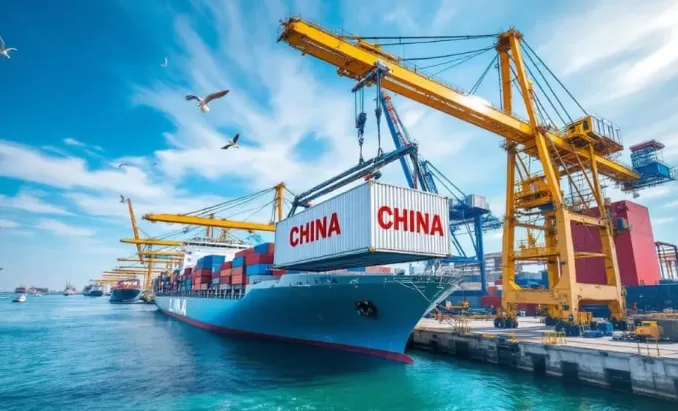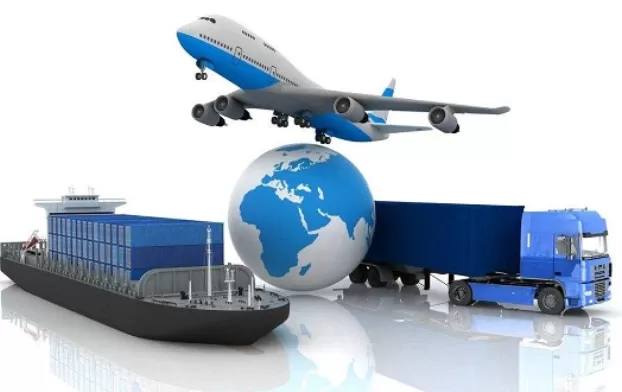Highlights
Sea Freight: Estimated cost: $2,800–$5,000+ per 20ft container, transit time: 30-35 days
Air Freight: Estimated cost: $5–$9 per kg, transit time: 5-8 days (including customs)
Multi-Modal (Sea-Rail): Cost: $4,000–$6,000+, transit time: 28-33 days
Express Shipping: Estimated cost: $10–$16 per kg, transit time: 3-5 days
Customs & Tariffs: Import duties vary widely (0% to 25%+); always confirm your product's HS code.
Are you ready?
Get real-time quotes for New Orleans
Get Quotes
Table of Contents
Introduction
Shipping Methods: A Quick Look
Sea Freight: Best for Bulk Shipments
Air Freight: Speed with a Premium
Multi-Modal (Sea-Rail): A Balanced Alternative
Express Shipping: Fast and Flexible
Detailed Route & Transit Time Breakdown
Cost & Service Deep Dive for SMEs
Essential Customs Clearance Guide
Real-World Insights & Case Study
Risks & Tips: Avoid Common Pitfalls
FAQ: Shipping from China to New Orleans
Complementary Shipping Routes
Introduction
Shipping goods from China to New Orleans, a key gateway to the Mississippi River and the U.S. Gulf Coast, is a vital link for businesses. Whether you’re an importer, small business owner, or Amazon FBA Shipping Guide from China, navigating the complexities of international logistics is crucial for success. This updated 2025 guide breaks down all your shipping options—by sea, air, and land—with clear costs, realistic transit times, and essential advice on handling U.S. customs to ensure your goods arrive efficiently and cost-effectively.
Shipping Methods: A Quick Look
Not sure where to start? Here’s a quick snapshot of your options. We’ll dive into the details of each method next.
Sea Freight: The go-to for cost-effective, large shipments. Slow but steady.
Air Freight: Your best bet for speed. Premium price for premium delivery.
Multi-Modal (Sea-Rail): A smart balance between cost and time for many shippers.
Express Shipping: Simple, all-in-one solution for small, urgent packages.
Sea Freight: Best for Bulk Shipments
Sea freight is the most economical choice for transporting high-volume, non-perishable goods. Shipments typically sail to major U.S. ports like Houston or Mobile before being trucked to New Orleans.
Estimated Cost: $2,800–$5,000+ per 20ft container (FCL). This is a fluid estimate—final rates get hit with Fuel Surcharges (BAF), Peak Season Surcharges (PSS), and port fees. For smaller shipments, LCL (Less than Container Load) is a cost-effective option priced per cubic meter.
Transit Time: Door-to-door typically takes 30-35 days. This includes ocean transit, port handling, and final truck transport.
Best For: Importers of heavy machinery, bulk raw materials, furniture, and large quantities of consumer goods where cost beats speed.
Example: A construction company importing a large order of steel components would choose FCL sea freight to minimize cost per unit, building the longer transit time into their supply chain plan.
Air Freight: Speed with a Premium
When time is critical, air freight is the best option. While significantly more expensive, it offers unparalleled speed for urgent or high-value items.
Estimated Cost: Typically priced between $5–$9 per kilogram. Rates jump based on fuel costs and market demand.
Transit Time: Total door-to-door shipping is usually 5-8 days. This includes the flight to a major U.S. air gateway (like Chicago O'Hare (ORD)), customs clearance, and final truck shipment.
Best For: Electronics, pharmaceuticals, samples, high-value fashion, and any inventory needed to restock for an urgent sale or to avoid stockouts.
Example: An e-commerce business running a flash sale on a new drone model would use air freight to ensure rapid restock and meet customer delivery promises.
Multi-Modal (Sea-Rail): A Balanced Alternative
A popular and efficient option that combines sea and rail. Goods are shipped by sea to a West Coast port (like Los Angeles/Long Beach) and then transported across the U.S. via domestic rail to a rail ramp near New Orleans for final truck delivery.
Estimated Cost: This integrated service typically costs between $4,000–$6,000+ for a 20ft container.
Transit Time: Total transit is generally 28-33 days. The rail leg is reliable but adds time compared to a direct all-water route to the Gulf.
Best For: Shippers looking for a good balance between cost and reliability, especially when Gulf Coast direct sailings are congested or scarce.
Example: An importer of automotive parts might choose this route for its consistent scheduling and to avoid potential delays at Southern ports during hurricane season.
Express Shipping: Fast and Flexible
For very small, urgent packages (under ~70 kg), international express carriers like DHL, FedEx, and UPS are the simplest solution. They handle everything from pick-up to final delivery and customs clearance.
Estimated Cost: This is the most expensive per-kilo option, usually ranging from $10–$16 per kg.
Transit Time: Extremely fast, with door-to-door delivery in 3-5 business days.
Best For: Critical documents, small samples, very low-volume urgent orders, and replacement parts.
Example: A design firm needs to send prototype samples from a factory in Shenzhen to their client in New Orleans for a last-minute meeting. Express shipping is the perfect, hassle-free solution.
Detailed Route & Transit Time Breakdown
Ocean Freight Solutions
Get real-time quotes for New Orleans
Get Quotes
Detailed Air Freight Routes & Transit Times
Air shipments from China to New Orleans operate through a hub-and-spoke system: China airport → U.S. hub airport (customs clearance) → domestic transportation → New Orleans.
Sample Route: Shenzhen/Shanghai (PVG) → Chicago O’Hare (ORD) → New Orleans (MSY)
Origin Handling & Export Customs (1–2 days): Your freight forwarder picks up, secures, and palletizes your goods at a Chinese airport (e.g., PVG).
Main International Flight (2–3 days): Flies from PVG to ORD (~14-16 hr flight). Chicago is a major hub with plenty of flights and customs facilities.
U.S. Customs Clearance (1–3 days): The biggest variable. Your customs broker submits docs to CBP. Fast with perfect paperwork; slow if inspected (+5 days).
Domestic Transportation (1–2 days): Cleared goods are usually trucked from Chicago to New Orleans (~900 miles).
.
Total Air Freight Time: 5–10 days (The commonly quoted 5-8 days assumes smooth customs).
Detailed Ocean Freight Routes & Transit Times
Ocean freight to New Orleans mainly uses two routes: Direct Gulf Service and West Coast intermodal service.
Route A: Direct Gulf Service (Shanghai → Houston → New Orleans)
Origin Port Handling (2–5 days): Your goods are trucked to Shanghai/Ningbo port, stuffed into a container, and await loading.
Main Ocean Voyage (25–28 days): The ship crosses the Pacific, goes through the Panama Canal, and heads to the Port of Houston.
Destination Discharge & U.S. Customs (2–4 days): The ship unloads, and your cargo clears customs in Houston.
Inland Transportation (~1 day): A truck carries the container from Houston to New Orleans (~350 miles).
Total Ocean Freight Time (Route A): 30–38 days
Route B: West Coast Transfer (Shanghai → LA/LB → Rail → New Orleans)
Process: Ship to LA/LB (~14-16 days), then transfer to domestic rail (e.g., BNSF/UP) to a New Orleans rail hub, then truck to final destination.
Rail Segment: 7-10 days for cross-country rail.
Total Duration: Similar to direct Gulf service, approx. 30-40 days, but more affected by West Coast port congestion. A good peak-season alternative.
Route & Transit Time Summary
| Shipping Stage |
Air Freight (China → New Orleans) |
Ocean Freight - Direct (China → Houston → New Orleans) |
|
| 1. Origin Handling |
1–2 days |
2–5 days |
|
| 2. Main Transport |
2–3 days (PVG→ORD flight) |
25–28 days (to Houston) |
|
| 3. Dest. Customs |
1–3 days (at ORD) |
2–4 days (at Houston port) |
|
| 4. Inland Transport |
1–2 days (Truck: ORD→MSY) |
~1 day (Truck: Houston→NOLA) |
|
| Total Estimated Duration |
5–10 days |
30–38 days |
|
Cost & Service Deep Dive for SMEs
Quick Guide: Sea Express vs. Sea-Truck
| |
Sea Express |
Sea-Truck |
|
| Final Delivery |
UPS/FedEx Ground |
Dedicated 53-ft Truck |
|
| Ideal For |
< 15 CBM (Small, frequent batches) |
> 2 CBM (Large, palletized goods) |
|
| Core Advantage |
Hands-off! No appointment needed. |
Most Cost-Effective! Lowest cost per unit. |
|
| Main Risk |
UPS/FedEx peak season delays. |
Appointment Risk! Missed Amazon slots cost $$$. |
|
| The Analogy |
Like ordering takeout - it just shows up. |
Like renting a truck - you must schedule unloading. |
|
Sea Express: Ocean Shipping + Final Parcel Delivery
What it is: Ocean to West Coast port (usually LA/Long Beach), then delivered via UPS/FedEx Ground after customs. The easiest, most hands-off option for smaller shipments.
Best for: Small to medium-sized sellers shipping under 15 CBM who want a balance of cost, speed, and no-hassle delivery.
Best Practices
Get real-time quotes for New Orleans
Get Quotes
Detailed Route & Timeline (Shanghai → New Orleans FBA)
| Stage |
Est. Duration |
Key Things to Know |
| 1. Origin Handling |
3-5 days |
Time starts when your forwarder picks up the goods. |
| 2. Ocean Transport |
14-16 days |
Must use a fast vessel (e.g., Matson, ZIM). Slow boats add 1-2 weeks. |
| 3. US Customs |
3-5 days |
Biggest delay risk: Customs exam can add 5-10+ days. |
| 4. Final Parcel Delivery |
4-6 days |
The best part: Tracks like a domestic package. No appointment needed. |
| Total Lead Time |
24-32 days |
Ideal timeline for a fast vessel. Expect peak season delays. |
Sea-Truck: Ocean Shipping + Final Truck Delivery
What it is: Ocean to a Gulf Coast port—usually Houston (HOU) for better cost and routes—then a dedicated truck delivers to the Amazon FBA dock.
Best for: Medium to large sellers shipping over 2 CBM (often 15+ CBM) with pallets or heavy goods. Lowest cost per CBM but needs more coordination.
Detailed Route & Timeline (Shanghai → New Orleans FBA)
| Stage |
Est. Duration |
Key Things to Know |
| 1. Origin Handling |
5-7 days |
LCL shipments wait for the container to be filled with other cargo. |
| 2. Ocean Transport |
25-28 days |
HOU is chosen for its frequent sailings and cheaper drayage to NOLA. |
| 3. US Customs |
4-7 days |
Big delay risk: Customs exam can add 5-10+ days. |
| 4. Final Truck Delivery |
1-2 days |
The biggest headache: Amazon appointment. Getting a slot can take 1-5 extra days in peak season. |
| Total Lead Time |
35-45 days |
Slower than Sea Express, but offers the lowest cost for big shipments. |
Shipping from China to New Orleans: Quotes for Different Methods
| Shipping Method |
Estimated Cost |
Transit Time |
Best For |
Additional Notes |
| Air Freight |
$5–$9 per kg |
5–8 days |
High-value, time-sensitive goods (electronics, fashion, etc.) |
Quick delivery but costly. Best for urgent shipments. |
| Sea Freight (FCL) |
$2,800–$5,000+ per 20ft container |
30–35 days |
Large quantities of non-perishable goods, machinery, furniture |
Cheapest per unit for large shipments. |
| Sea Freight (LCL) |
$150–$300 per cubic meter |
35–40 days |
Small to medium shipments that don't require a full container |
Flexible, pay only for space used. |
| Sea-Rail (Sea-Rail) |
$4,000–$6,000+ per 20ft container |
28–33 days |
Heavy goods or when Gulf Coast ports are congested |
Combines sea and rail transport, balanced cost and time. |
| Sea-Truck (Sea+Truck) |
$3,500–$5,500 per 20ft container |
35–45 days |
Large batches, Amazon FBA sellers, palletized goods |
Ocean freight + truck to final destination (usually FBA). |
| Express Shipping (DHL, UPS, FedEx) |
$10–$16 per kg |
3–5 days |
Small urgent packages, high-value items, or documents |
Highest cost but ideal for small, high-priority shipments. |
Additional Notes for Amazon FBA
Sea-Truck and Sea Express are often preferred by Amazon FBA sellers because they are reliable and cost-effective for large shipments. Sea-Truck provides a more coordinated delivery, while Sea Express is ideal for smaller and more frequent shipments.
Sea Freight (LCL) is perfect for businesses that have intermittent or smaller-sized shipments but still want to take advantage of sea freight rates.
Beware of "Hidden Fees" (Critical for SMEs)
The cheapest quote can get expensive fast. Always ask if your price includes these common add-ons:
Customs Bond Fee / ISF Filing Fee: For filing required customs paperwork ($25-$50/shipment).
Appointment Fee: For Sea-Truck, a fee to schedule the Amazon delivery ($30-$60/shipment).
Peak Season Surcharge (PSS): An extra fee during busy times (e.g., Q4).
Overweight/Oversize Fee: If your package is too big or heavy for UPS/FedEx.
Storage Fees: If your cargo sits at a warehouse too long.
Pro Tip: Always, always ask for an "All-Inclusive Quote" or a full breakdown of potential extra fees.
Essential Customs Clearance Guide
Clearing U.S. Customs is a must-do and can cause big delays if you mess it up. Here’s the simple version:
Hire a Customs Broker: Just do it. They’re experts and will handle the complicated paperwork for you.
Get Your Docs Ready: You and your supplier need to provide:
Commercial Invoice: Details what's in the box, its value, and quantity.
Packing List: Itemizes every box and its dimensions/weight.
Bill of Lading (BOL) or Air Waybill (AWB): The contract between you and the shipper.
Find Your HS Code & Duties: Every product has a Harmonized System (HS) code that decides its import duty.
‼️ IMPORTANT: Duty rates are NOT just 0%-10%. They can be anywhere from 0% to 25% or higher based on what your product is made of and where it's from. You MUST check the correct HS code and duty rate for your specific product.
Pay Up: Your customs broker will handle paying any duties, taxes, and fees.
Pro Tip: Never guess an HS code or product value. A mistake can lead to seized goods, audits, and huge fines. Your customs broker is worth every penny.
SME Case Study: Importing Electronics to New Orleans
NOLA Tech, a growing online retailer, needed to import smart home devices from Shanghai before the holidays.
The Problem: Sea freight was cheap ($3,200) but slow (35+ days), risking a missed sales window. Air freight was fast but pricey ($8,500).
The Decision: They did the math: the potential lost sales ($55,000) was way higher than the extra cost for air shipping ($5,300).
The Result: They chose air freight. Goods landed at ORD, cleared customs in 24 hours with their broker, and were in their New Orleans warehouse in 6 total days. They nailed the peak demand and kept their customers happy.
Risks & Tips: Avoid Common Pitfalls
Port Congestion: Major ports like LA/LB get jammed, especially from Aug-Nov. This causes delays for trucks and trains too.
Peak Season Surcharges: Rates go up and space gets tight around Chinese New Year (Jan/Feb) and the fall holidays. Book 4-6 weeks ahead.
Weather & Disruptions: The Gulf Coast gets hurricanes (June-Nov). Have a backup plan—port closures stop everything.
Incorrect Paperwork: The #1 cause of customs delays. Double-check everything with your supplier and forwarder.
Insurance: Always buy marine cargo insurance. It’s cheap peace of mind for if your goods are lost or damaged.
Tip: If West Coast ports are a mess, shipping through East Coast (e.g., Savannah) or Gulf Coast (e.g., Houston) ports can sometimes get your goods to New Orleans faster overall, even with a longer ocean trip.
FBA Program
Get real-time quotes for New Orleans
Get Quotes
FAQ: Shipping from China to New Orleans
1. What’s the difference between East Coast and West Coast shipping routes?
-
Shipping to East Coast ports (e.g., Savannah, New York) is all-water but has a longer ocean time. Shipping to West Coast ports (e.g., LA, Long Beach) is faster by sea but needs cross-country rail or trucking to reach New Orleans, which adds cost and time.
2. What’s better: FCL or LCL?
3. How much more expensive is air freight compared to sea freight?
4. How can I avoid customs issues when shipping to the US?
5. Is rail a viable option for shipping to New Orleans?
-
Yes, but as part of a multi-modal solution. There is no direct rail from China. Goods arrive by sea at a West Coast port and then connect to the extensive U.S. domestic rail network (e.g., BNSF, Union Pacific) for the journey to Louisiana.
6. What risks should I be aware of during peak shipping seasons?
-
Rolled Containers: Your booked container might be "rolled" to a later vessel. Major Rate Hikes: Everyone adds peak season surcharges. Longer Transit Times: Everything is overloaded—ports, trains, and trucks—causing delays at every stage.
Complementary Shipping Routes
Many shipments for New Orleans move through other big hubs. Knowing these routes gives you good alternatives.
Shipping from China to Houston: The biggest Gulf Coast port, often a direct stop for ships, with easy trucking to NOLA.
Shipping from China to Los Angeles: The main West Coast gateway, where cargo gets moved by rail or truck across the country.
Shipping from China to New York: A major East Coast hub that can be a smart choice when the West Coast is backed up, even with a longer ocean journey.
Many shipments destined for New Orleans may transit through other major logistics hubs. Understanding these routes can provide valuable alternatives.

 EN
EN
 FR
FR
 ES
ES
 JA
JA
 PT
PT
 RU
RU
 AR
AR








